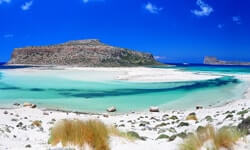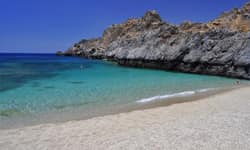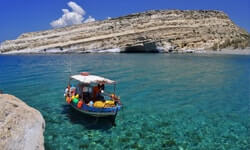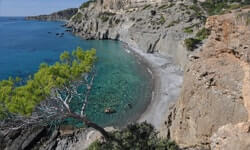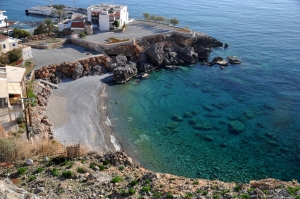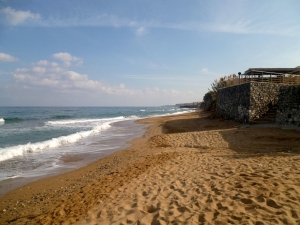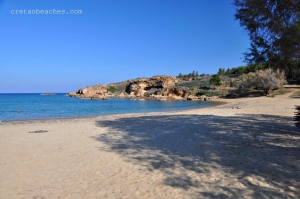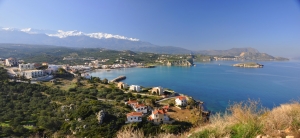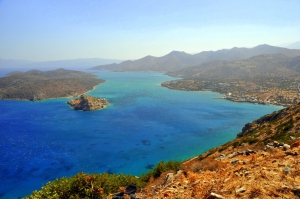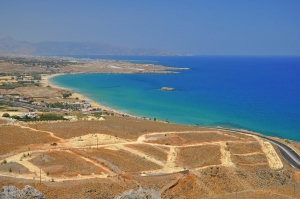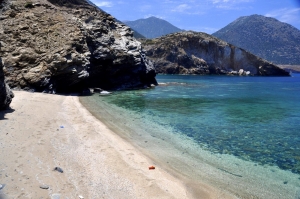Chora Sfakíon or Sfakia is a small town on the south coast of Chania. It is the capital of the remote and mountainous region of Sfakia, and is a small town of just 278 inhabitants (2001 census). It lies on the south coast near the end of the Imbros Gorge, 74km south of Chania.
Skaleta beachfront starts 11km east of Rethymno and stretches 3km to the east. It is the last part of the vast beach of the Gulf of Rethymno. The first beach after Pighianos Kampos is Sfakaki, a very well organised resort.
The two beaches of the Holy Apostles (greek: Agii Apostoli) are located just 3km west of Chania and is a beautiful resort. The first cove at west is located just besides the east edge of Glaros beach. It is a beautiful sandy beach with all amenities and a large parking place nearby and easily accessed.
Almyrida is located 23km east of Chania, on the south shores of Souda Bay, and 1km west of Plaka village. It is a quiet resort with good facilities and a superb sea. The unspoiled countryside and the lush oil groves around Almyrida are ideal for walking.
Plaka is located 16km north of Agios Nikolaos, opposite the entrance of the lagoon of Korfos (or lagoon of Elounda), in one of the most beautiful places of Crete. A feature of Plaka is the wonderful views of the island Kalydon, on where the famous fortress of Spinalonga stands.
On the vast bay, there are two settlements, Karteros and Amnissos. The area has grown so much that the two villages are now united. The main reason for the rapid development of the area is the small distance from Heraklion and the vast beach with the fine golden sand.
Sougia is a small village located 75km west of Chania, at the exit of the beautiful Gorge of Agia Irini. A favorite destination for hippies in the 70s', today it is a perfect choice for peaceful holidays in a beautiful landscape with all the basic amenities provided.
Charakas is a area located about 36km east of Rethymno and 44km west of Heraklion, close to Bali. Half a kilometer east of the Church of Panagia Charakiani, a small peninsula is formed on the side of which there are the small beaches of Glaros and Katevati. The highway connecting Heraklion and Rethymno passes nearby.





